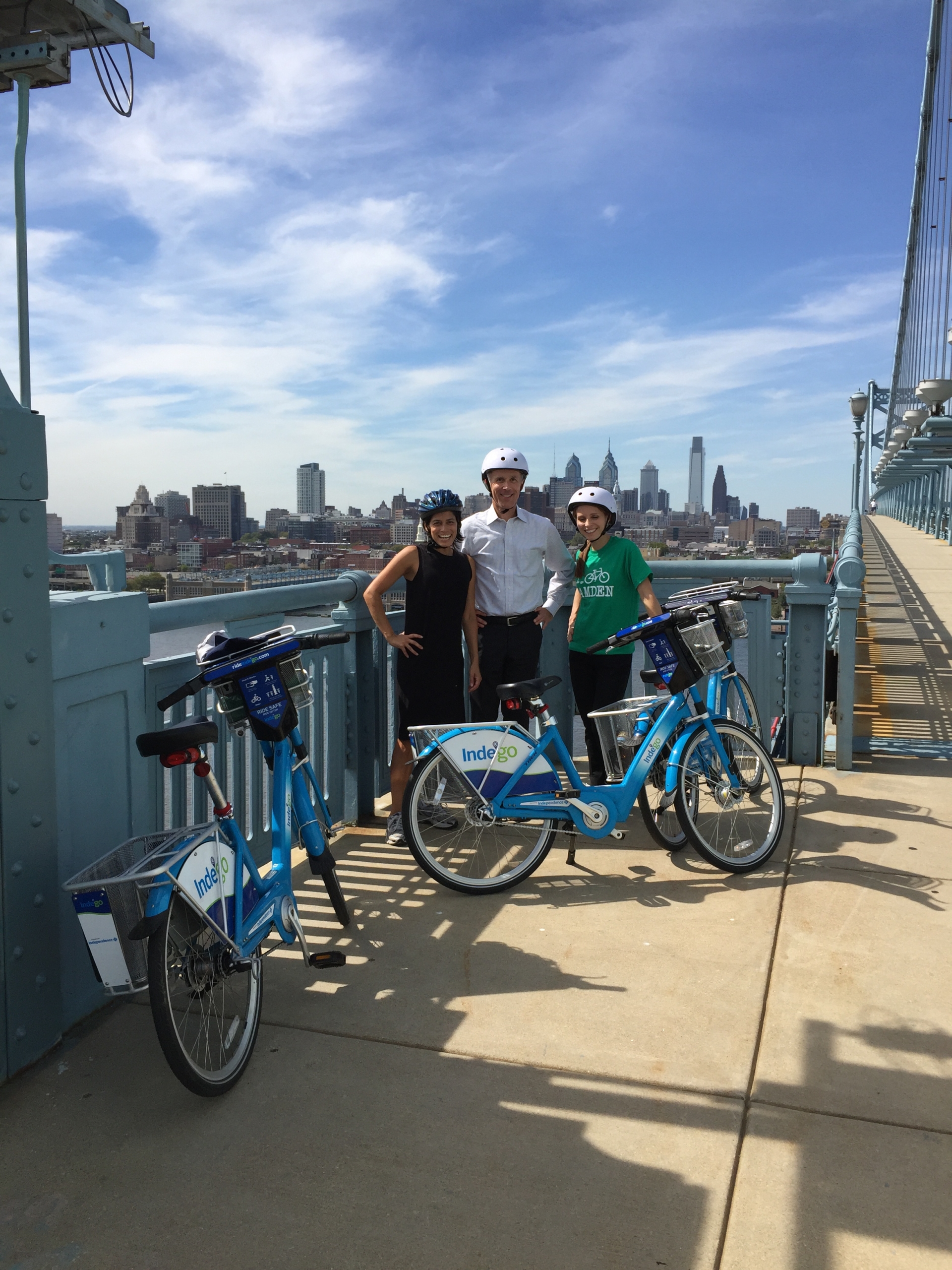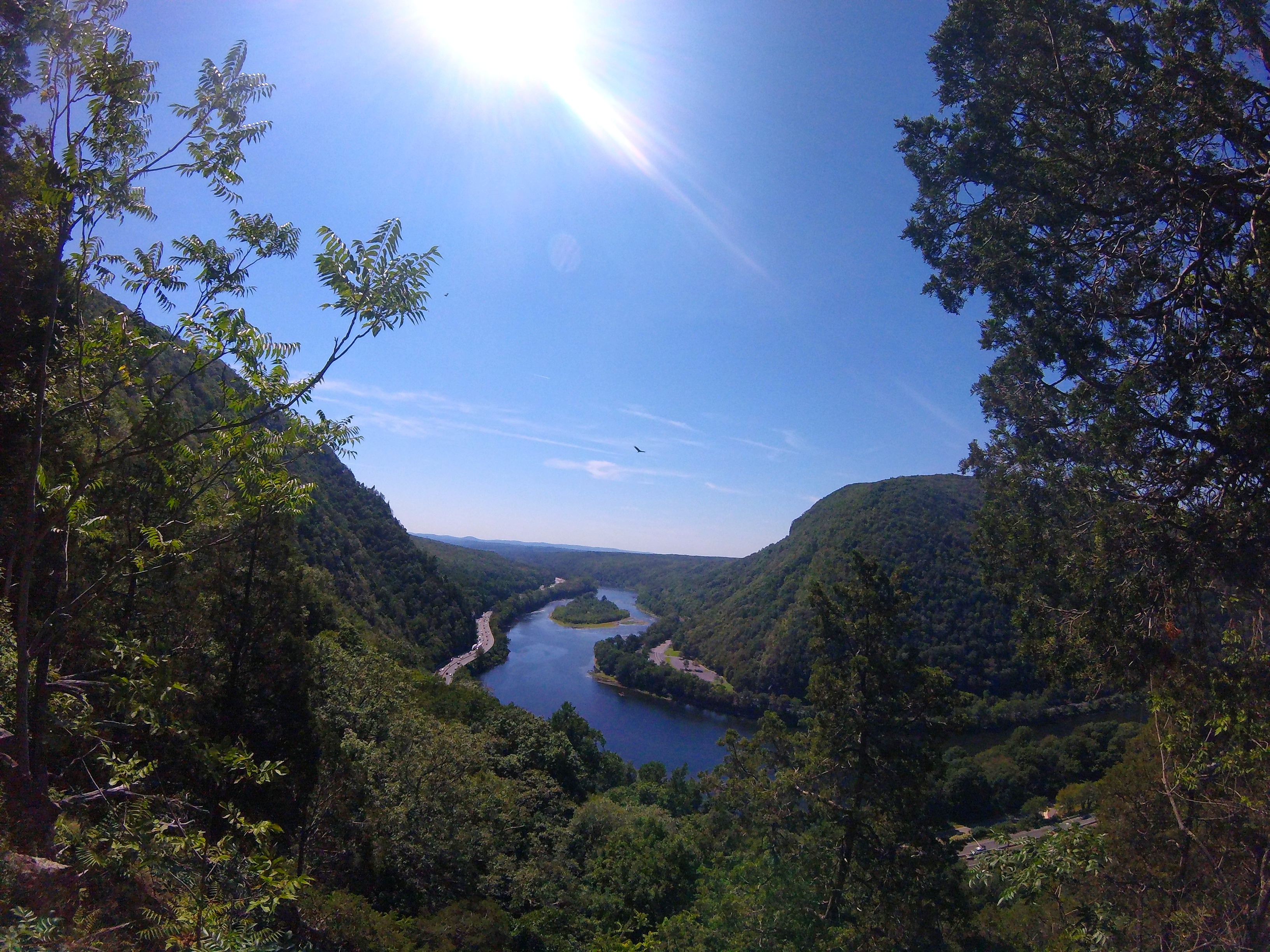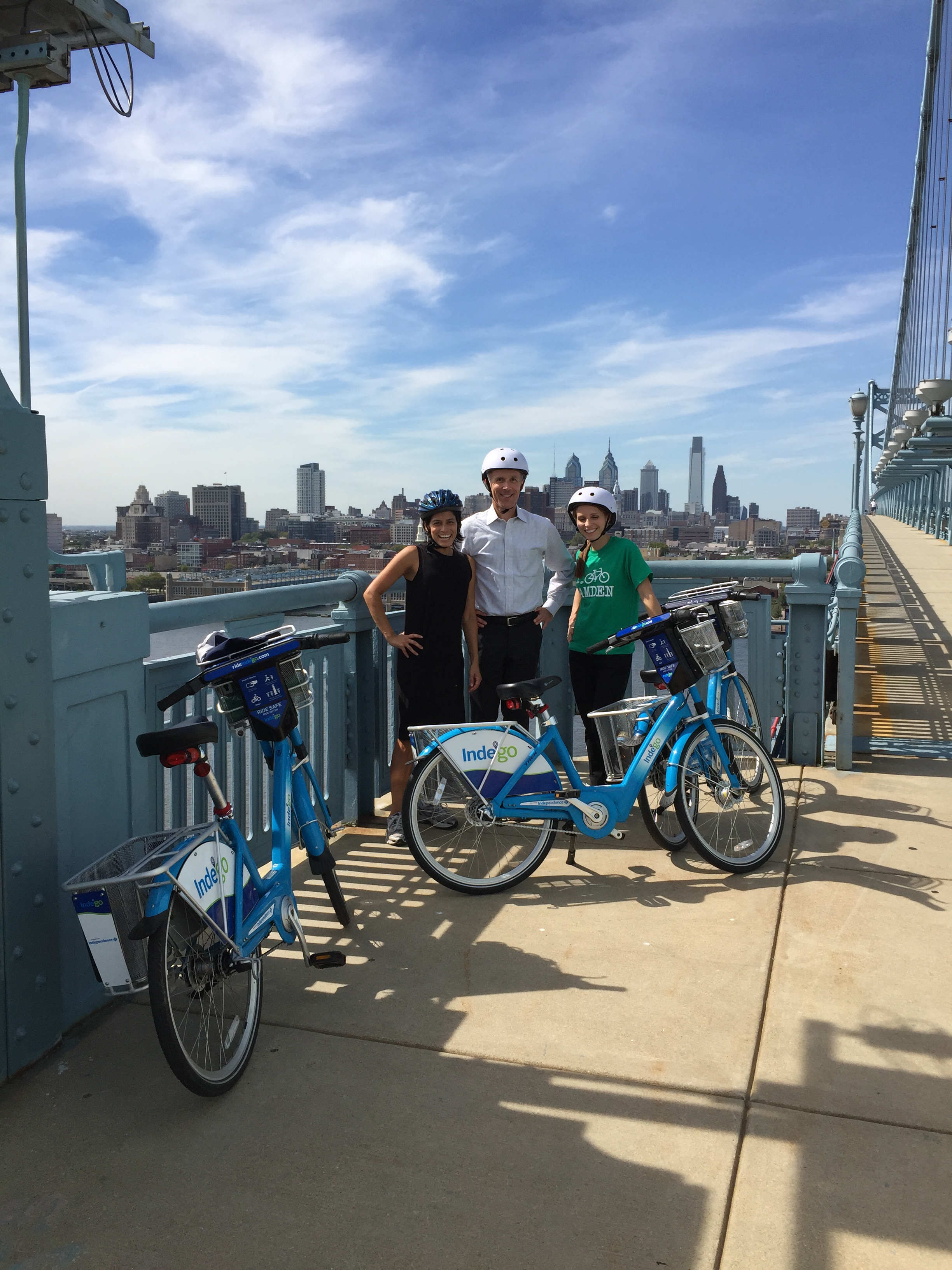The Circuit Trails & the Delaware River Watershed
Authored By: The Circuit Trails | March 2, 2017

In our region, the health of our waterways is closely tied to the maintenance and expansion of the Circuit Trails, but we are often asked why the two are so intimately linked. To help shed some light on the connection between watershed conservation and a healthy trail network, we sat down with Andy Johnson, Watershed Protection Program Director at the William Penn Foundation for a Q&A on the topic. Read on!
 The Delaware River Water Gap, part of the Delaware River Watershed. (photo by the William Penn Foundation)
The Delaware River Water Gap, part of the Delaware River Watershed. (photo by the William Penn Foundation)
1.The William Penn Foundation focuses part of its grantmaking on watershed conservation and protection. Why do you fund trails as part of this effort?
Our Watershed Protection program focuses on restoring and protecting water quality in the Delaware River watershed. We do this by supporting research, policy, conservation and building a constituency of advocates for protecting water.
Protecting and restoring water quality is a long-term effort. Knowing that we need to engage the next generation of conservationists to continue this important work, we support programs that build a constituency of clean water advocates for the future. Some of the most likely advocates for water are the people who enjoy it for outdoor recreation and enjoyment, which is where funding trails comes into play.
Trails are essential platforms for connecting people with the water. The miles of trails along waterways create places for people to recreate and grow a sense of familiarity with and affinity for their local river or stream. The hope is that in time they build a sense of stewardship for keeping the water clean. Trails also serve as outdoor classrooms, providing a platform for environmental education, whether that’s formal or informal.
The careful development of trails can also help keep our streams and rivers cleaner. Without carefully constructed trails next to rivers and streams, our waterways could suffer from erosion over time as people walk directly along the water’s edge. As one example, the Friends of the Wissahickon Sustainable Trails Initiative created a recreational trail network that limits erosion and protects the surrounding forest habitat.
2.What exactly is a watershed?
Many people know their local river or stream, like the Wissahickon, the Brandywine or the Cooper. The local waterway that you know and love is just one piece of a larger watershed. A watershed is a closed, natural system comprised of a river, its tributaries, and the land that surrounds them. All water that falls on the land or into a waterway within this system flows downstream and eventually into the ocean.
The Delaware River watershed, which encompasses the greater Philadelphia region, spans 13,500 square miles across parts of four states and provides drinking water for 15 million people.
3.Many miles of the Circuit Trails run along rivers and streams. Why is that the case?
Historically, the land alongside streams and rivers served as transportation routes for trains. In the 19th century, railroads were built along our waterways; however, over time many of these railways were discontinued, leaving behind miles of unused rail corridors.
Around that time, the federal Clean Water Act was also enacted to help clean up our rivers from widespread pollution. Once urban waterways became cleaner, people wanted to be near the water’s edge again, and these forgotten right-aways have been repurposed into trails that give people direct access to the water.
One great example of this in our region is the Schuylkill River Trail, which follows the river for about 130 miles between Philadelphia and Pottsville, Pa. Averaging 19,000 user trips per week, it was built along the water specifically for scenic and recreational benefit, as are many other sections of the Circuit Trails.
4.What do you hope that trail users understand about the watershed as they enjoy the Circuit Trails, particularly on the segments that parallel waterways?
We hope they will develop an understanding that their local trails and waterways are part of something much bigger, and that their positive experience on the Circuit Trails is in large part due to the fact that the nearby water is clean. We hope that this realization inspires trailgoers to protect both the water and the trails, which depend on each other in order to thrive.
If you are a trail user, I encourage you to think about the quality of the water in the river or stream that you are next to while on the trail, and how it enhances your outdoor experience.
5.What is your favorite Circuit Trail? Why?
I’m not sure I could choose just one. I live in New Jersey, so I frequent the Cooper River Trail near my home. I often run, walk and bike along that trail. I am also an avid rower and love being on the water, so I enjoy the Schuylkill River Trail as my transportation to and from Boathouse Row during the spring and summer seasons.
It’s also an amazing experience to use the Ben Franklin pedestrian bridge, part of the Circuit, as the connector between Camden and Philadelphia. Seeing both cities, and the Delaware River itself, from that perspective is a one-of-a-kind experience.
 Andy Johnson, center, bikes across the Ben Franklin Bridge with the help of Indego bikeshare. (Photo by the William Penn Foundation)
Andy Johnson, center, bikes across the Ben Franklin Bridge with the help of Indego bikeshare. (Photo by the William Penn Foundation)


